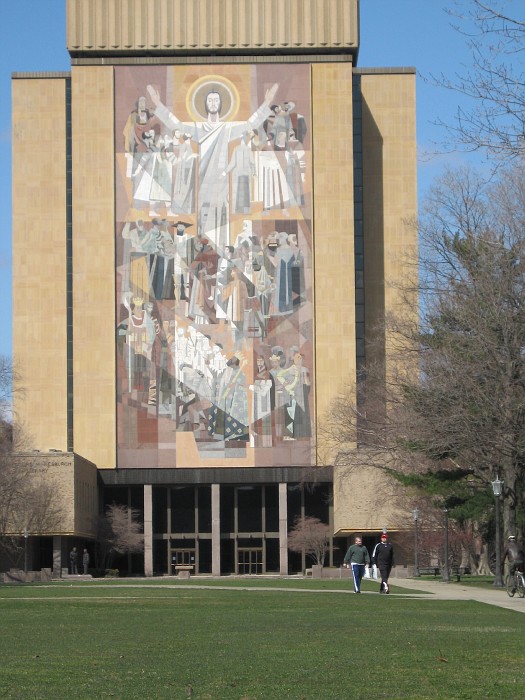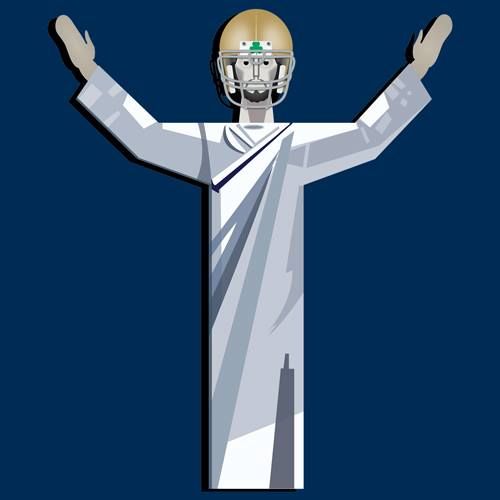

Workers will wash down the surfaces with water and a light detergent and the elastic urethane adhesive in the stone seams will be replaced. “It’s a lot like tuck-pointing,” said Douglas Schlagel, Notre Dame’s director of construction and quality assurance, of the masonry and joint sealant repairs on all of the exterior masonry wall surfaces. This latest renovation is expected to be complete by the end of September. Clever engineering allows for their expansion and contraction in these conditions, but every 10 to 15 years or so, a bit of preventive maintenance is required, which is why scaffolding went up above Christ’s golden halo last week for the first time since the summer of 1994. Emphasizing what Father Hesburgh has called its “kaleidoscope of personalities,” it includes 81 different stones from 16 countries, a list of which reads like a found poem: 46 granites and syenites 10 gabros and labradorites four metamorphic gneisses four crystalline marbles five limestones and 12 serpentines.Īdorned or otherwise, the exterior walls of the Hesburgh Library, like everything outdoors in northern Indiana, are severely treated by weather, enduring frigid winter temperatures, lake effect snows and sleets, torrential rains and steamy summer heat. The mosaic realizing that idea is 134 feet high and 68 feet wide and composed of 324 panels and 6,700 separate pieces of granite.

I put Christ at the top with the disciples to suggest that He is the great teacher - that is really the thematic idea.” The thought was that the various periods that are suggested in the theme have unfolded in the continuous process of one generation giving to the next. In an interview some years later, Sheets said that he had envisioned the mural as “a great processional…a never-ending line of great scholars, thinkers, and teacher-saints who represented the best that man has recorded. The mural faces south toward the north end zone of Notre Dame Stadium, and Christ’s iconic arms, raised to symbolize crucifixion, resurrection and blessing, inescapably suggest the gesture made by football referees to indicate a score.įather Hesburgh wanted it to suggest more than that, and so did Millard Sheets, the California artist he commissioned for the mural. “Touchdown Jesus,” the students (and soon just about everyone else) began to call it, and the nickname, if irreverent, is immediately comprehensible. While achieving at least that modest architectural goal, the mural, which took shape during the spring of 1964 and was kept covered throughout its installation, became a signature landmark of the University from the moment of its unveiling during the formal dedication of the library May 7 of that year. Nevertheless, as Notre Dame’s 94-year-old president emeritus said recently, sitting in his library office before one of the building’s rare windows, “we just didn’t want the thing to look like a grain silo.”

The resulting design called for featureless and massive exterior walls, the library being 13 stories and 210 feet tall, and the architects’ choice of Mankato stone, with its warm auburn color and richly granular surface, compensated that barrenness a little. Paul, Minn., designers of what was in 1963 called the Memorial Library, were governed by a librarian’s utilitarian distaste for windows, which admitted problematic and potentially manuscript-damaging light and could distract attention from the printed page. Hesburgh, C.S.C., describes it, the massive “ Word of Life” mural on the south side of the building which has since been named for him was something of an afterthought.


 0 kommentar(er)
0 kommentar(er)
